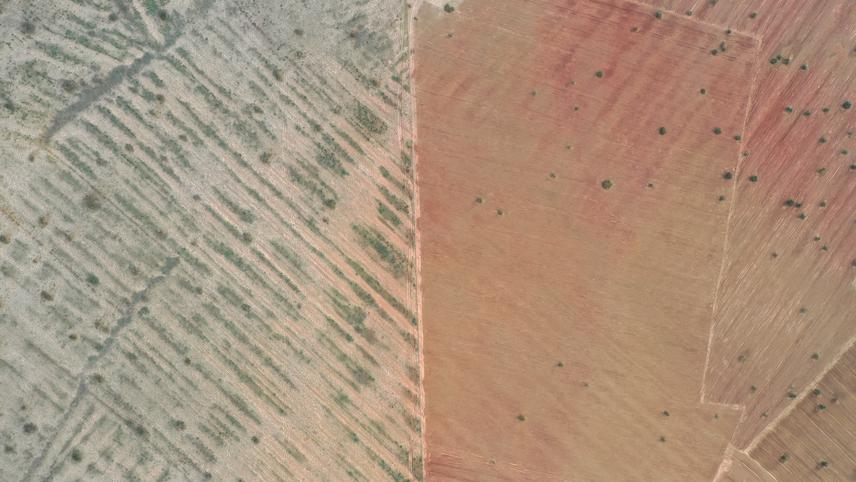Varun Kher
Large areas in the Thar Desert are currently being restored under the umbrella of the Great Indian Bustard (GIB). But this landscape also supports many other threatened birds, whose ecology and response to ongoing habitat restoration is virtually unknown. My project aims to use methods rooted in community and population ecology to holistically assess the benefits of GIB centric ecological restoration on associated bird species. The specific objectives of the project are as follows:

Aerial view of ecological restoration in the Thar Desert. To the right is the original land-cover (agriculture) and to the left is the restored grassland. © WII Bustard Recovery Program.
1. Comparing bird distribution between restoration areas and outside, across seasons.
2. Understanding impacts of GIB focused restoration on population and distribution parameters of associated bird species, particularly threatened species and to establish a paradigm for monitoring demographics in the future.
3. Ascertaining status of resident threatened species of the Thar desert - White-browed Bushchat, Laggar Falcon, Egyptian Vulture, Red-headed Vulture, White-rumped Vulture, Indian Spotted Eagle, Tawny Eagle.
4. Acquainting relevant stakeholders with avifauna of the region through in-person meetings and distribution of outreach materials.
The results of the study would be helpful in refining restoration activities in the landscape and will provide more information on understudied and threatened birds of the Thar Desert.